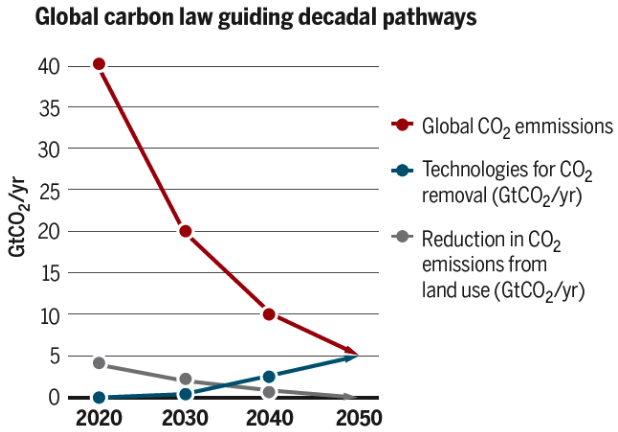What equals one kilo of CO2? Is a tonne of CO2 a lot? And how do our personal lifestyle choices affect how much is released into the atmosphere? This can all be hard to grasp because we can’t really see or touch the emissions. Below, we have listed some examples of how much CO2 is linked to different objects, what the impact is and info we hope will serve as a helpful tool to get this under control.
[Reminder] Globally, we emit about 40 gigatonnes of CO2 into the atmosphere each year. That number is so large that It feels impossible to understand. The info you may want to keep in mind going forward though, is that we need to reduce this number in half every decade to stay reasonably safe from climate change. That means, in 2030 we need to be down to 20 gt, in 2040 to 10 gt, and in 2050 to 5 gt.

The mindset to continuously half the emissions can and should be applied universally – by everyone. That includes governments, companies as well as us as individuals. It might seem like a big stretch, but let’s start with the low hanging fruit to start making an impact today – and it will just get easier from there!
Step one is to measure your carbon footprint. Countries are obliged to do this with data continuously tracked and updated by the UNFCCC. Some companies are obliged by national legislation to report their carbon footprint, while others do it on a voluntary basis. Individuals are currently not held accountable for their emissions, but judging by how rapidly our community is growing there are a lot of like minded people out there, seeing that they too can make a change and help contribute to meeting the targets needed for our planet’s well being.
The individual CO2 emissions of someone living in a western country is roughly 10 tonnes CO2. In some places it’s a little less, in the US and Australia it’s usually significantly higher (we will explain why in future posts). But this is a good general number to go by – 10 tonnes. Now, to start your own climate journey – go to our start page and calculate your personal footprint!
The strongest indicator of carbon emissions for an individual, is income level. That means that if you make 40 000 USD per year in Sweden or in South Africa, your emissions are likely more similar than between two people living in the same country but on different ends of the income spectrum. We still focus on economically wealthier countries in our business, as most of the consumption takes place in western countries and we therefore need to assume more responsibility.
Which items have a low vs high footprint?
| Banana | 0,08 kg |
| Streaming Netflix for an hour | 0,056-0,114 kg |
| a PET bottle | 0,43 kg |
| 120 g cheese burger | 2,5 kg |
| A pair of running shoes | 14 kg |
| Train London – Paris | 15 kg |
| New iPhone 11 | 72 kg |
| Couch | 90 kg |
| Laptop 15 inch MacBook Pro | 356 kg |
| Flight Paris – New York | 1,1 tonnes |
| Average driving in the US | 5,4 tonnes per year |
| New conventional car | 7 tonnes |
| New electric car | 10 tonnes |
| New house | 50 tonnes |
| 1 hectare (10 000 m2) of deforestation | 500 tonnes |
Hopefully these examples will help you focus on what is important. Try following these guidelines:
- The things that fall under 1 kg – don’t stress about it.
- If it’s more than 1 kg and you do it regularly – be mindful about your habits.
- Purchases around 100 kg – it is definitely worth looking for climate friendly alternatives. Could you possibly find it second hand?
- 1 tonne – is this really necessary? If there is no way to avoid it, offset the impact.
- More than 3 tonnes – this should only be things which you cannot live without.
- More than 100 tonnes – Is there anything you can do about this, even something small? Then you probably should!
The impact of 1 tonne of CO2 released into the atmosphere is terrifyingly easy to measure – it melts 3 square meters of arctic ice. So the impact of an average swede’s lifestyle is causing the disappearance of 30 m2 of arctic sea ice every year – that’s the size of 2,5 parking lots. Now let’s do something about that!
Curious to know more about your carbon footprint? Read the other posts in this series:
Me and my carbon footprint
What is a “carbon footprint”?
The carbon footprint of a home
The carbon footprint of a diet
The carbon footprint of our traveling
The carbon footprint of long distance traveling
The carbon footprint of shopping
The carbon footprint of public consumption
Or go to www.goclimate.com to calculate your carbon footprint now!